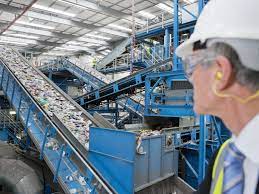
Recycled, sustainable, bio-sourced materials
Responsibility of the industry… and of the citizen
“Reuse requires setting up an industrial sector. For that, two things are needed: funding, and the need. Because if there is no bottle to wash, what is the point of building a washing plant? “, underlines the “Reuse and bulk” manager, for whom “mobilizing the consumer is one of the central points”. “Our goal is for companies to include eco-design, recyclability and reuse in their strategy. But as citizens, we also have a responsibility”!
Manufacturers are also working on the origin of the materials making up the packaging of their products. When you see a grey bottle of milk on the shelves, you can be surprised at its color, while all the others bottles are immaculately white. The industrialist’s trick is to explain his approach directly on the label: ‘This bottle is gray because it is made from recycled material.’ an example of eco-design that also works from a marketing point of view.”

In addition to materials from recycling, designers can also turn to “bio-sourced” plastics (of organic origin, mainly vegetable, not to be confused with biodegradable plastics – not as beneficial for the environment as it may not be). it seems), such as bio-PE or bio-PET, for which it will nevertheless be necessary to “develop the recycling channels before being able to exploit their full potential”. For more environmentally friendly supplies, they can also choose FSC (Forest Stewardship Council) or PEFC (Forest Certification Recognition Program) labeled paper and cardboard
What do you think?